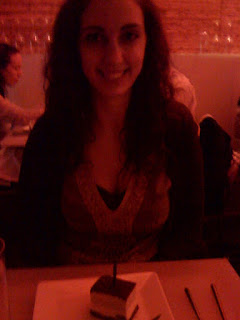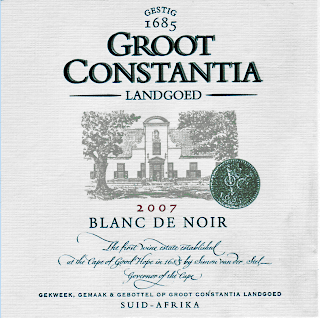Friday night, I was supposed to cook dinner for Stevie for her belated birthday present, but my partner-in-crime/sous chef came down with the stomach flu. Instead of canceling dinner plans altogether, we decided instead to cook together at her place. She and Josiah would provide the sustenance, I would bring dessert and birthday wine. I won’t go into detail about how deliciously perfect the steak with bone marrow butter was, since Stevie has already done so. I also won’t talk about the dessert, since I’ve already described it before. What I want to talk about instead is the wine.
For Christmas a few years ago, my mother gave me a wine club membership, where 3 unspecified bottles showed up on my hypothetical doorstep each month. Each wine came with a distinct recipe to pair with the wine, which still proves at times to be an interesting exercise in flavor combinations that had never before occurred to me. Some of these were easy drinking, less expensive wines, while others were a bit nicer and meant for laying aside.
One of the latter was a 2004 Rust en Vrede Estate Blend. I’d earmarked this wine months ago as one I wanted to try with Stevie, and her birthday/the delicious steak dinner that she had planned/the confluence of my upcoming trip seemed the perfect occasion to pop it. And boy was I right. The wine was a luxuriant, velvety, thick, balanced blend of Cabernet Sauvignon, Shiraz, and Merlot. It was big, bold, and fruity, with subtle tannins from the bottle age that rounded it out.
Josiah, who is a sommelier, said that it was the first South African wine he’d been truly impressed with – mostly, he thought, the wines tasted like an ash tray to him. And to be fair, there was an element of ashiness to this wine, which must be representative of the terroir, but it was so beautifully counterbalanced by the depth of the Cab, the fruit of the Merlot, and snazzy spice of the Shiraz that the wine just tasted…smooth.
Rust en Vrede is a 315 year old vineyard that was founded by in 1694 by the then Governor of the Cape, Willem Adrian van der Stel. The winery specializes exclusively in red wine production, producing full-bodied reds aged in new oak. The wines coming from this estate seem to defend the notion that Stellenbosch may be the premier region for red wine production in South Africa. The 2004 Estate Blend was pure deliciousness. Even the experts approved. Happy birthday Stevie!










